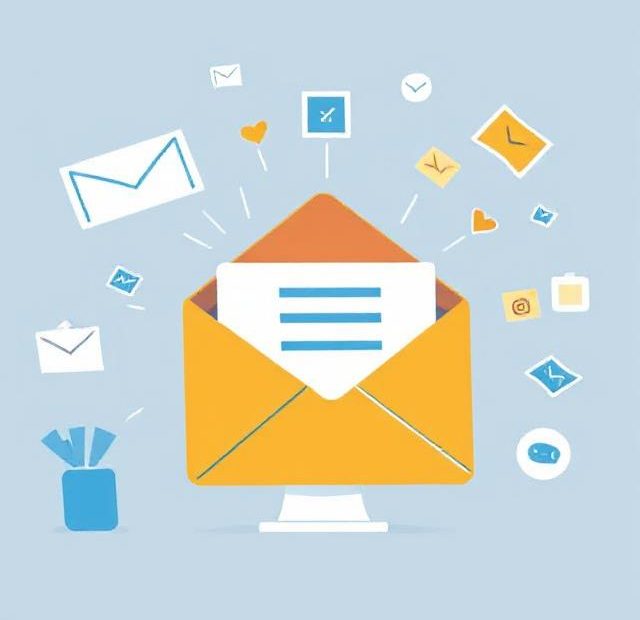Imagine this: a potential customer browses your website, adds a product to their cart, then vanishes without completing the purchase. You’ve lost a sale—but not necessarily forever. With retargeting via email, you can bring that prospect back, rekindle interest, and often close the deal.
Email retargeting is a smart, cost-effective marketing tactic that keeps your brand top-of-mind for users who have already shown interest. In this article, we’ll cover what email retargeting is, how it works, why it’s so effective, and how you can set it up to boost engagement and conversions.
What Is Email Retargeting?
Retargeting via email refers to the process of sending tailored emails to individuals who have interacted with your brand but didn’t complete a desired action—like making a purchase, signing up for a webinar, or downloading a resource.
These emails are triggered automatically based on user behavior, making them timely and highly relevant. Unlike traditional email marketing, which often targets broad segments, retargeting uses specific actions to deliver personalized messages that convert.
Why Email Retargeting Works
Retargeted emails consistently outperform standard email campaigns. Here’s why:
-
They’re timely: Emails are sent shortly after an action, like cart abandonment, when the interest is still fresh.
-
They’re personalized: Messages are based on specific behaviors or preferences, increasing relevance.
-
They boost ROI: Retargeted emails have open rates of over 40% and click-through rates above 10%, according to industry reports.
-
They nurture leads: Email retargeting helps guide users further down the funnel by addressing hesitations and providing value.
Whether your goal is sales, signups, or engagement, email retargeting is a low-cost, high-impact strategy.
Common Types of Email Retargeting Campaigns
Understanding which scenarios call for email retargeting is key. Here are the most common types of retargeted emails:
1. Cart Abandonment Emails
A user adds items to their cart but doesn’t check out. You send an email reminding them of the items, often with:
-
A discount
-
Free shipping
-
A sense of urgency (“Only 3 left in stock!”)
These emails often convert at 3x the rate of regular promotional emails.
2. Browse Abandonment Emails
Someone browses your site or product pages but doesn’t take action. You send them an email highlighting what they viewed, plus related products or testimonials to encourage purchase.
3. Post-Purchase Emails
Retargeting doesn’t end with the sale. You can email customers to:
-
Upsell or cross-sell
-
Request reviews
-
Offer loyalty rewards
-
Provide helpful usage tips
4. Re-Engagement Emails
If a subscriber hasn’t opened or clicked your emails in a while, a re-engagement campaign can reignite interest with:
-
A personalized message
-
Exclusive offer
-
Content updates
-
“We miss you!” style subject lines
How to Set Up an Email Retargeting Campaign
Implementing email retargeting involves several steps, but modern tools make the process straightforward. Here’s how to get started:
✅ 1. Use an Email Marketing Platform with Automation
Platforms like Mailchimp, ActiveCampaign, Klaviyo, or Brevo offer built-in automation features for email retargeting. Choose one that integrates with your website and CRM.
✅ 2. Set Up Behavioral Triggers
Decide what actions will trigger a retargeted email. Common triggers include:
-
Cart abandonment
-
Viewing a specific product
-
Downloading a lead magnet
-
Time since last interaction
Use these triggers to create targeted workflows.
✅ 3. Craft Personalized Email Content
Tailor your message based on the behavior. For example:
-
Cart Abandonment: “Still thinking it over? Here’s 10% off.”
-
Browse Abandonment: “We noticed you liked this jacket. Here are a few more you might love.”
-
Re-engagement: “We miss you! Here’s what’s new.”
Use dynamic content blocks to include user-specific items or information.
✅ 4. Optimize Timing
The timing of your emails is crucial. Best practices include:
-
Cart abandonment emails: Send within 1–2 hours of abandonment, followed by a reminder in 24 hours.
-
Browse abandonment emails: Within 1 day of visit.
-
Re-engagement emails: After 30–60 days of inactivity.
✅ 5. Monitor and Improve
Track performance metrics like:
-
Open rate
-
Click-through rate (CTR)
-
Conversion rate
-
Revenue per email sent
Use this data to A/B test subject lines, offers, send times, and content.
Tips for Successful Email Retargeting
Here are some final tips to help you succeed:
-
Keep it simple: Clear CTAs, clean design, and concise copy win.
-
Avoid being pushy: Retargeting should feel helpful, not annoying.
-
Make it mobile-friendly: Over 60% of emails are opened on mobile.
-
Don’t overdo it: Limit follow-up emails to avoid being marked as spam.
-
Ensure compliance: Follow GDPR and CAN-SPAM rules when retargeting based on data.
Final Thoughts
Retargeting via email is a powerful tool in your digital marketing toolbox. By reaching out to users who’ve already shown interest in your brand, you can boost conversions, recover lost sales, and improve customer relationships—all without blowing your budget.
When done right, email retargeting delivers highly personalized, timely messages that drive action. Start small with a cart abandonment sequence, then build out more sophisticated retargeting workflows as you grow.
In today’s competitive market, staying top-of-mind is essential. With smart email retargeting strategies, your brand can do exactly that—and see better results, faster.
Also, you can learn more about Using AI Tools here.
